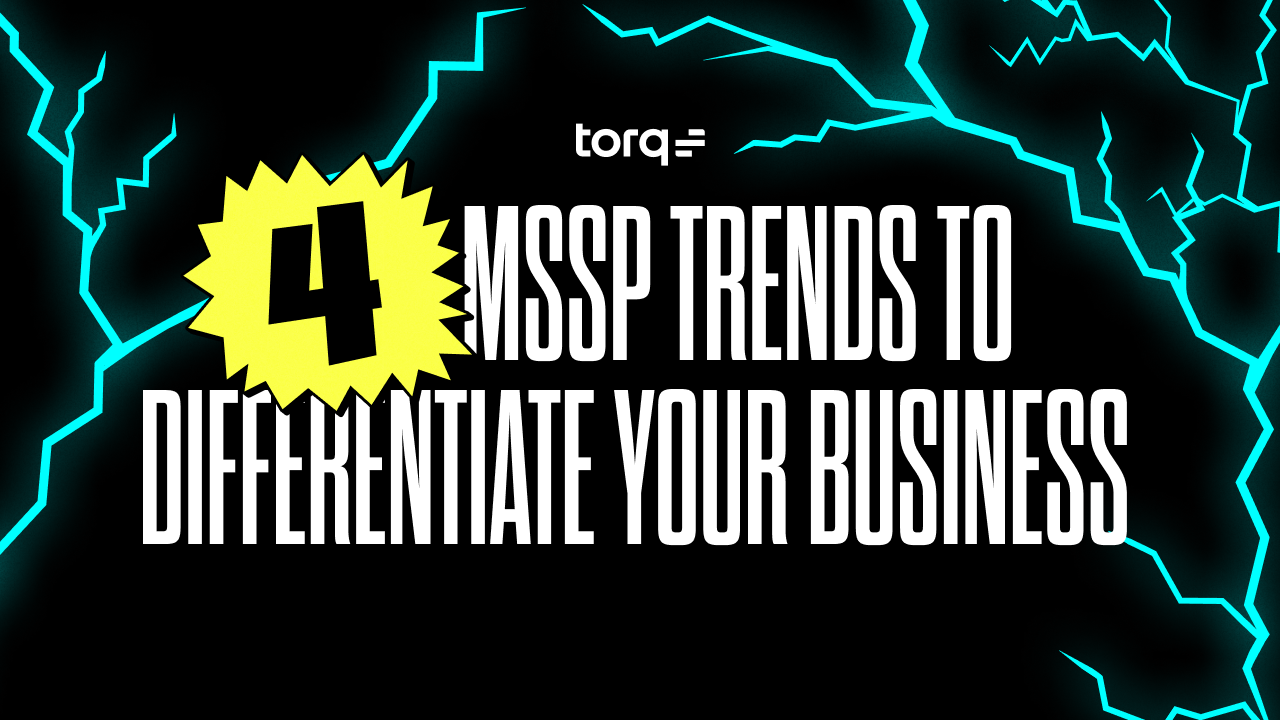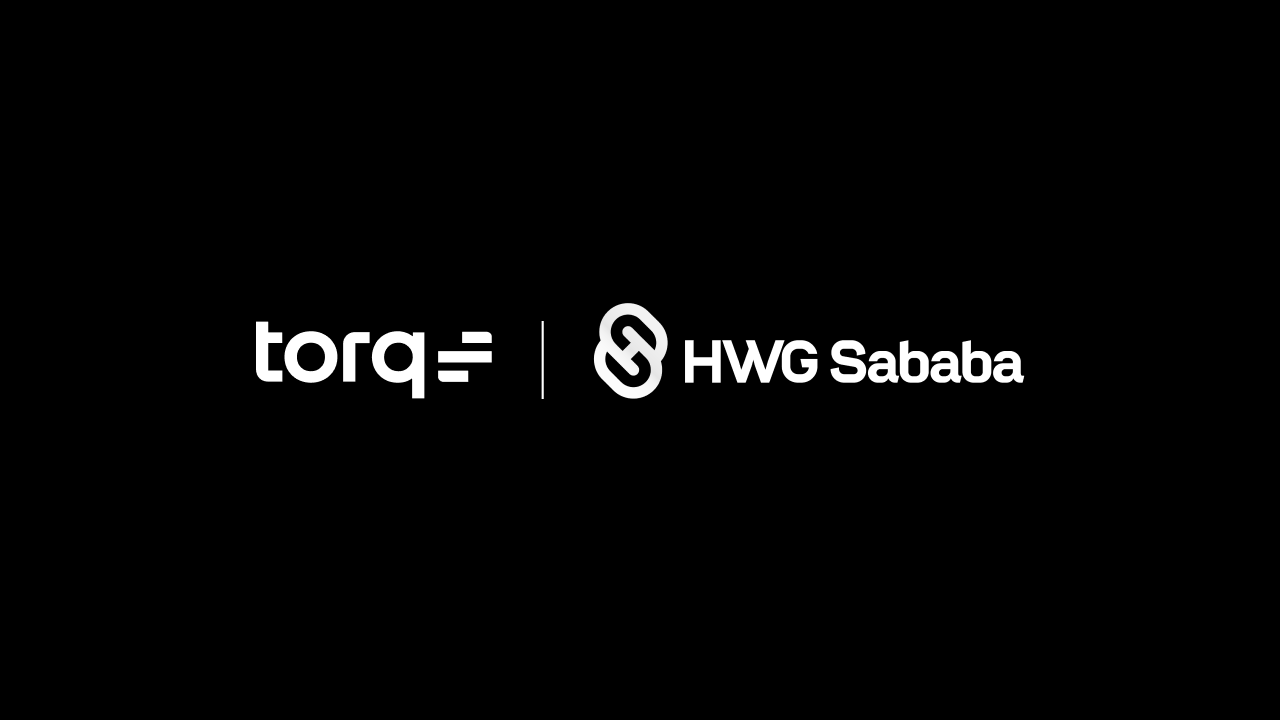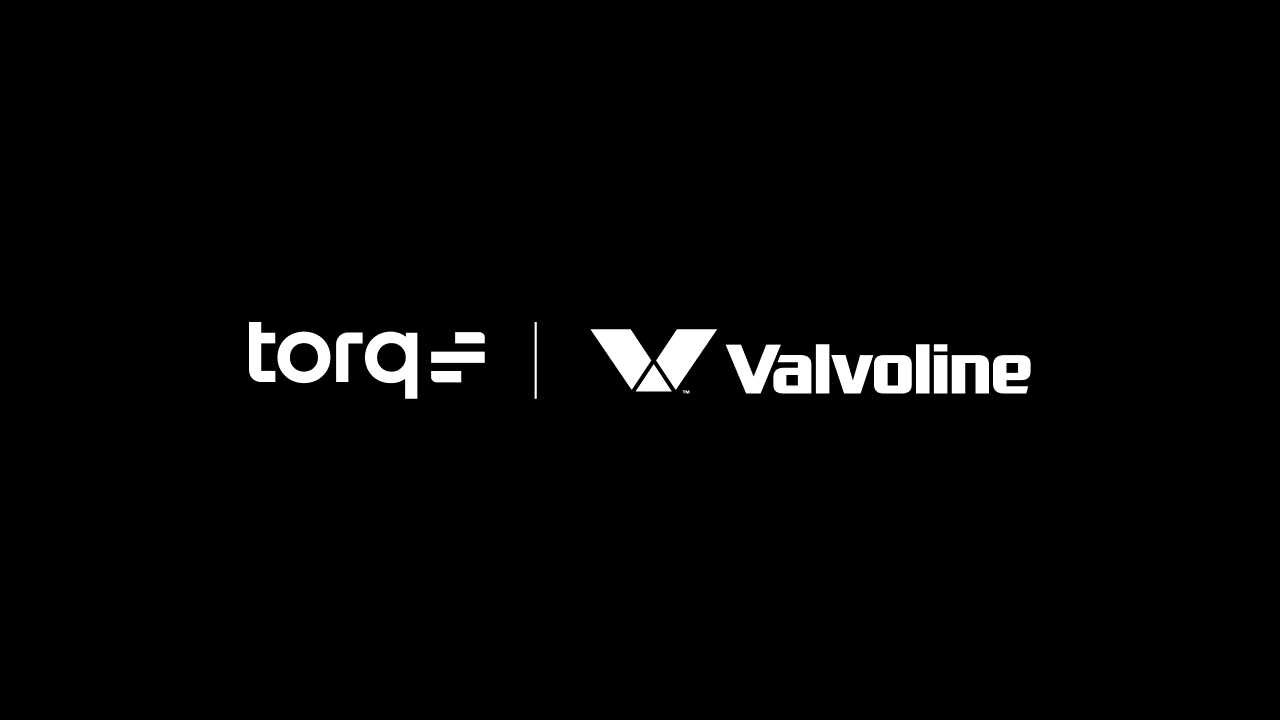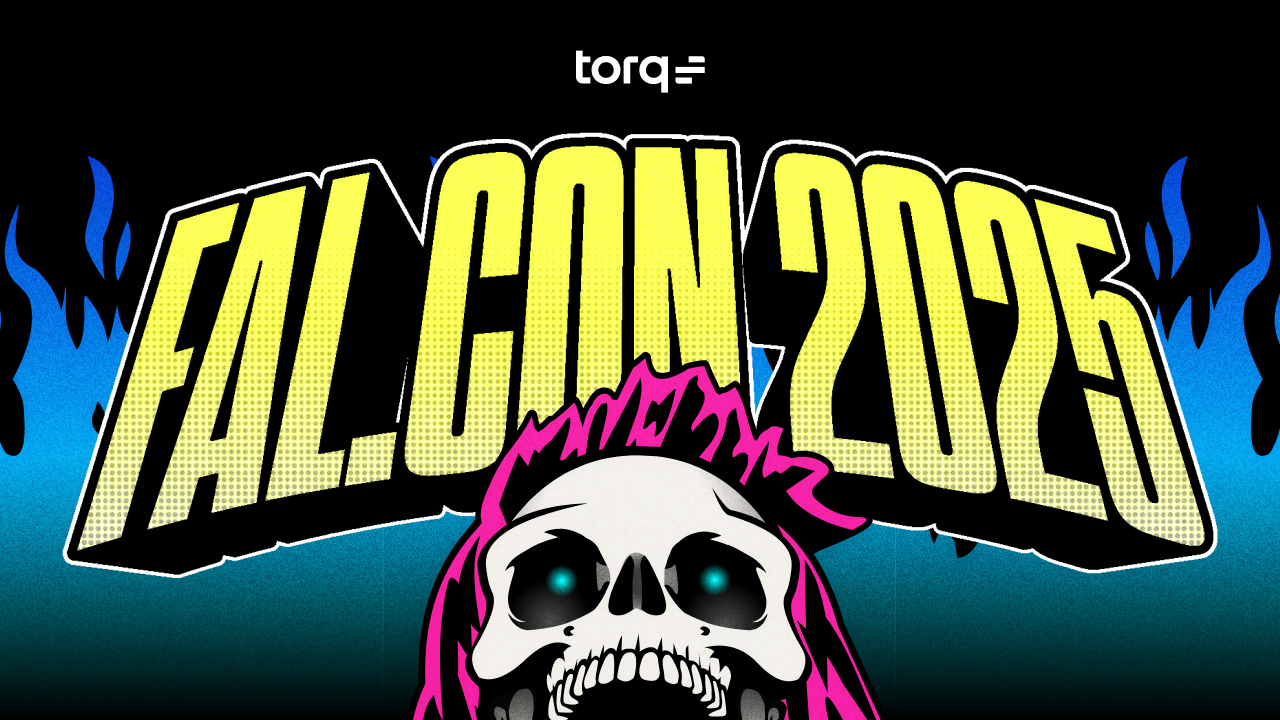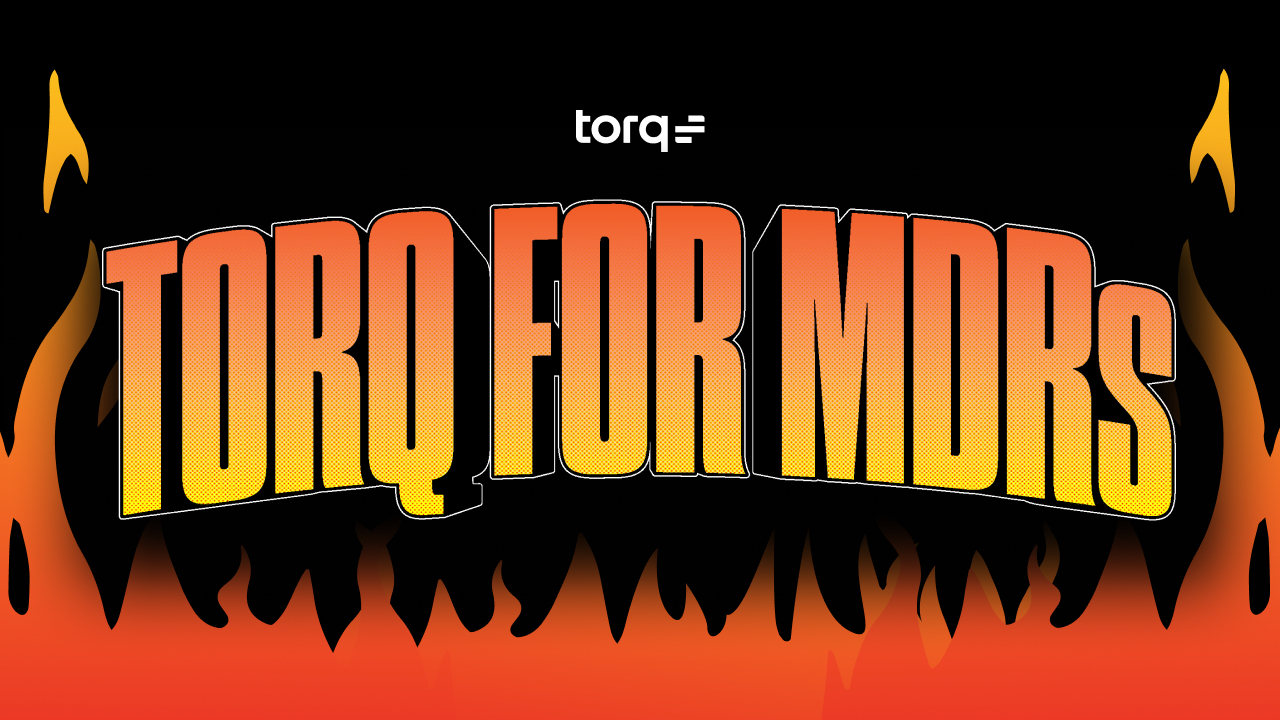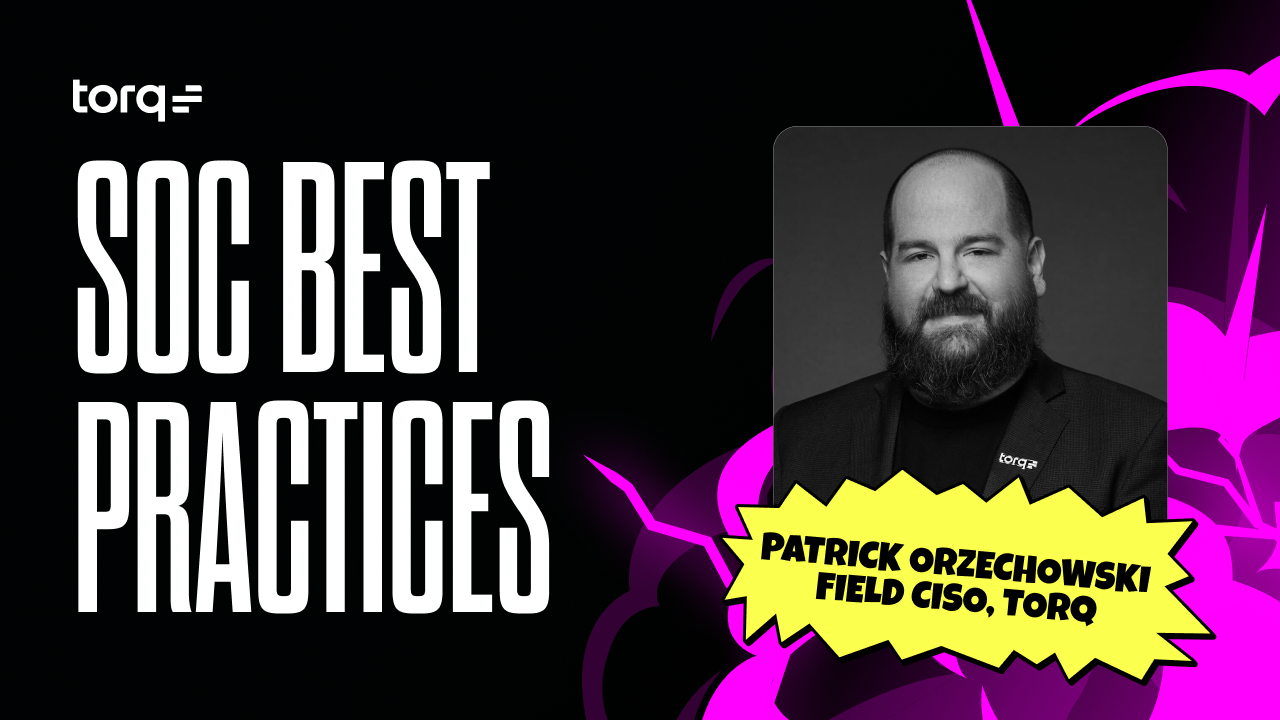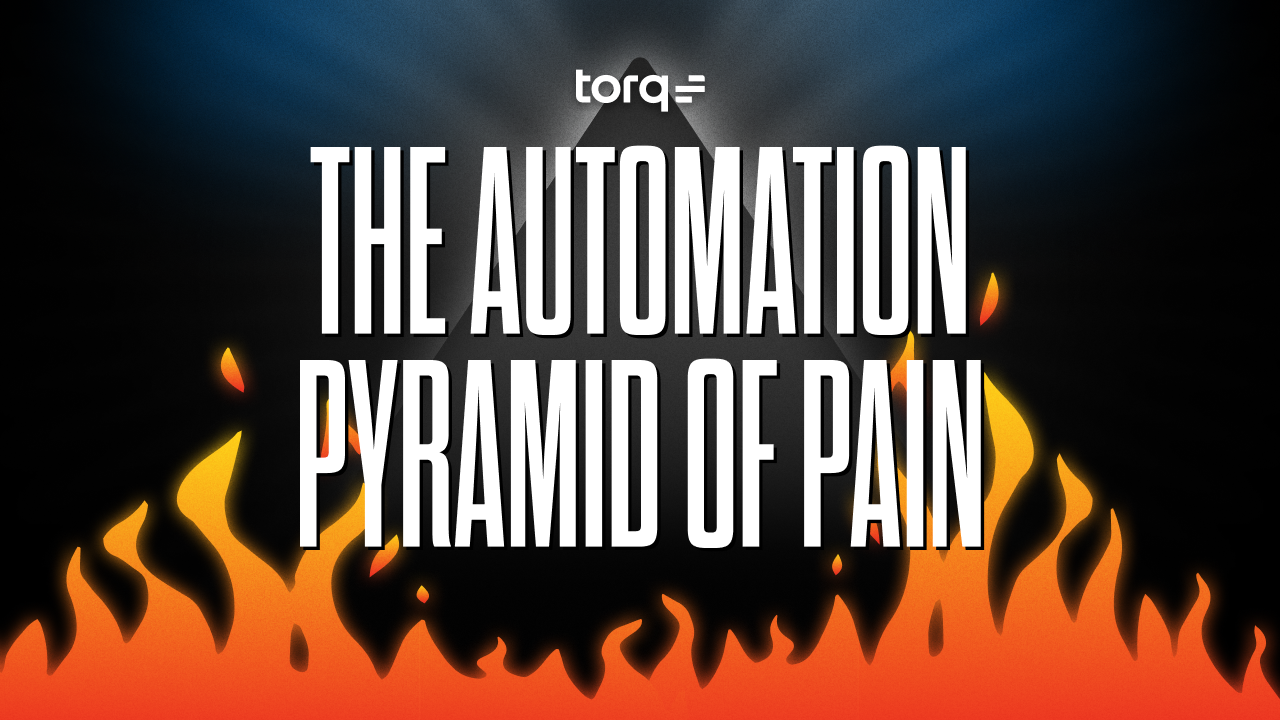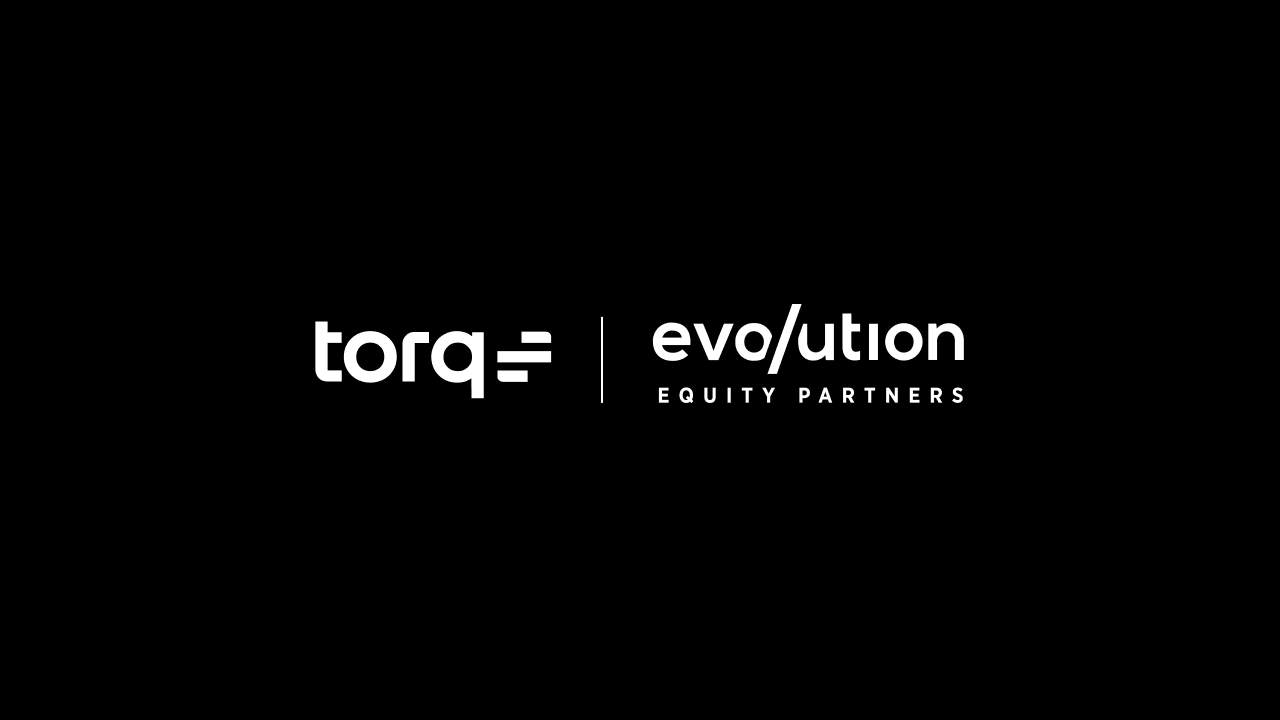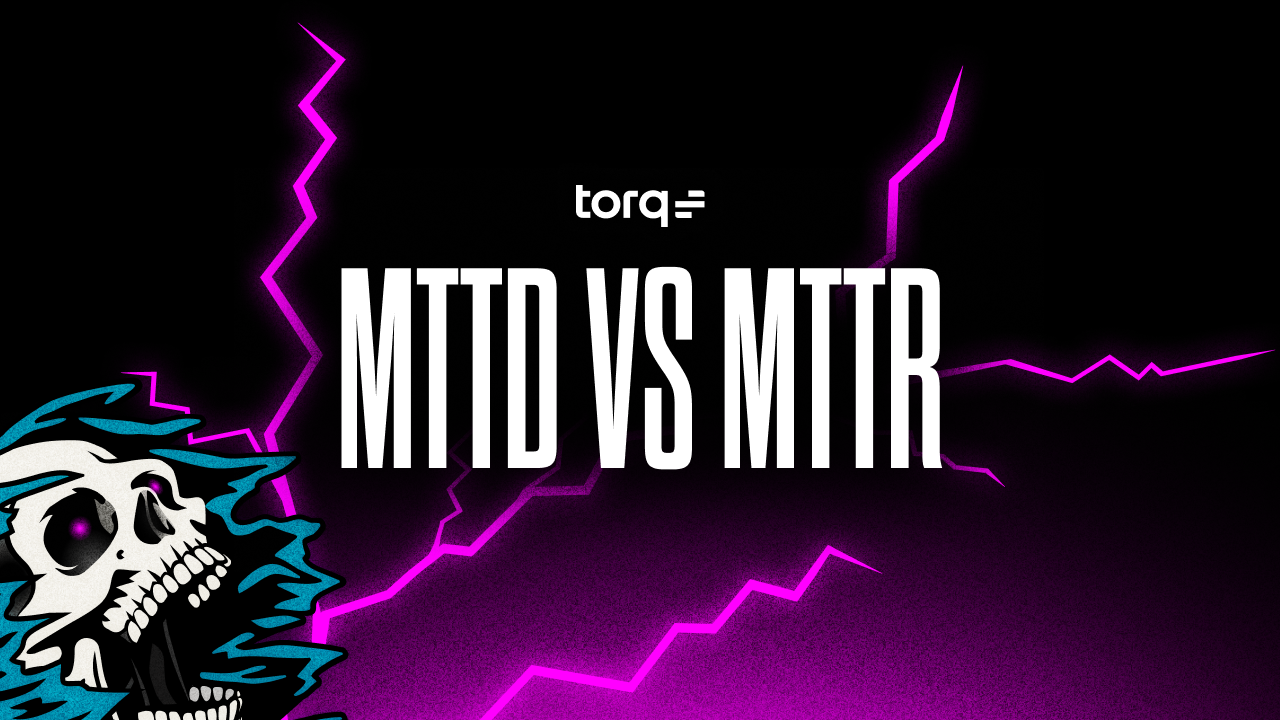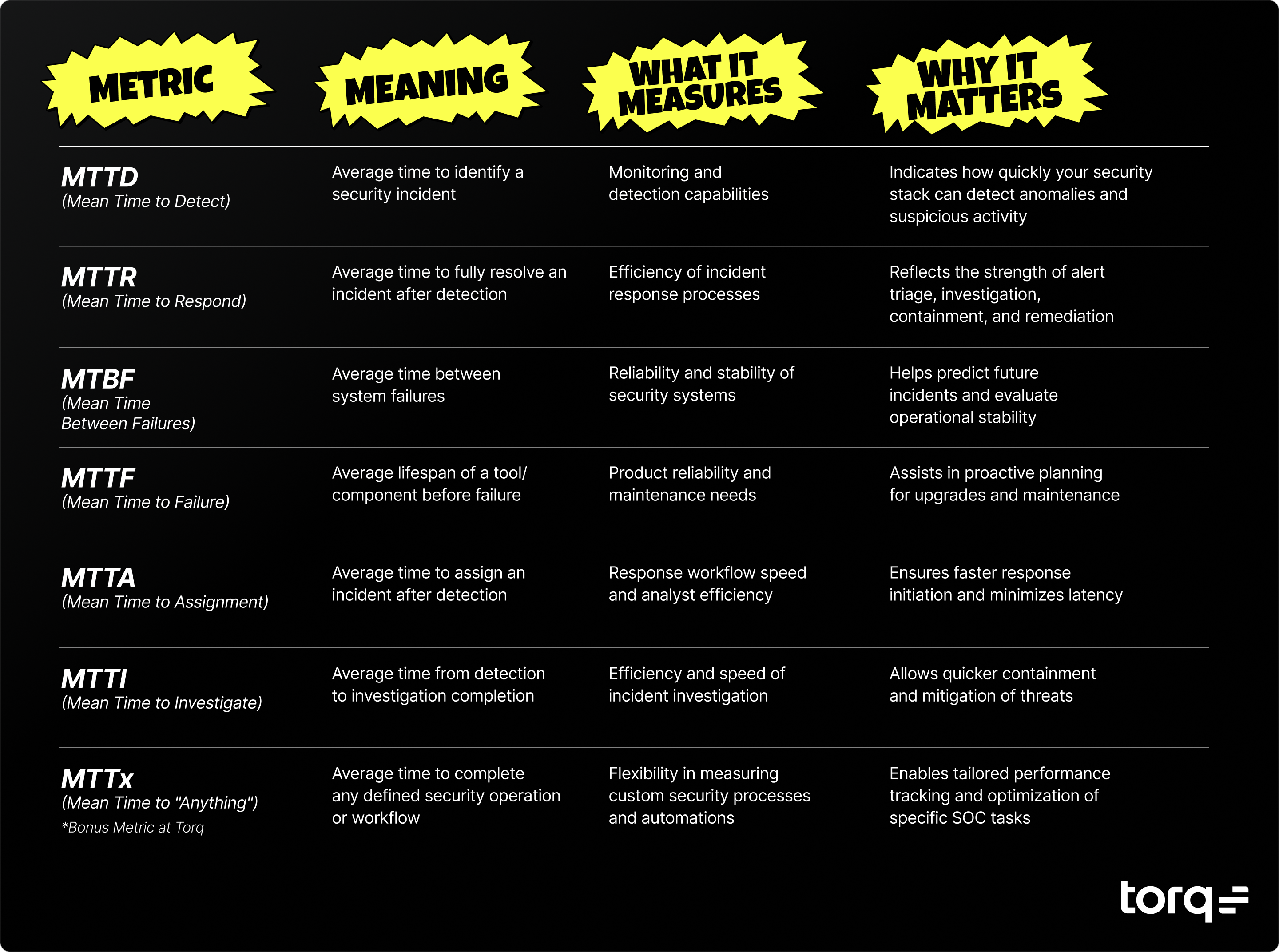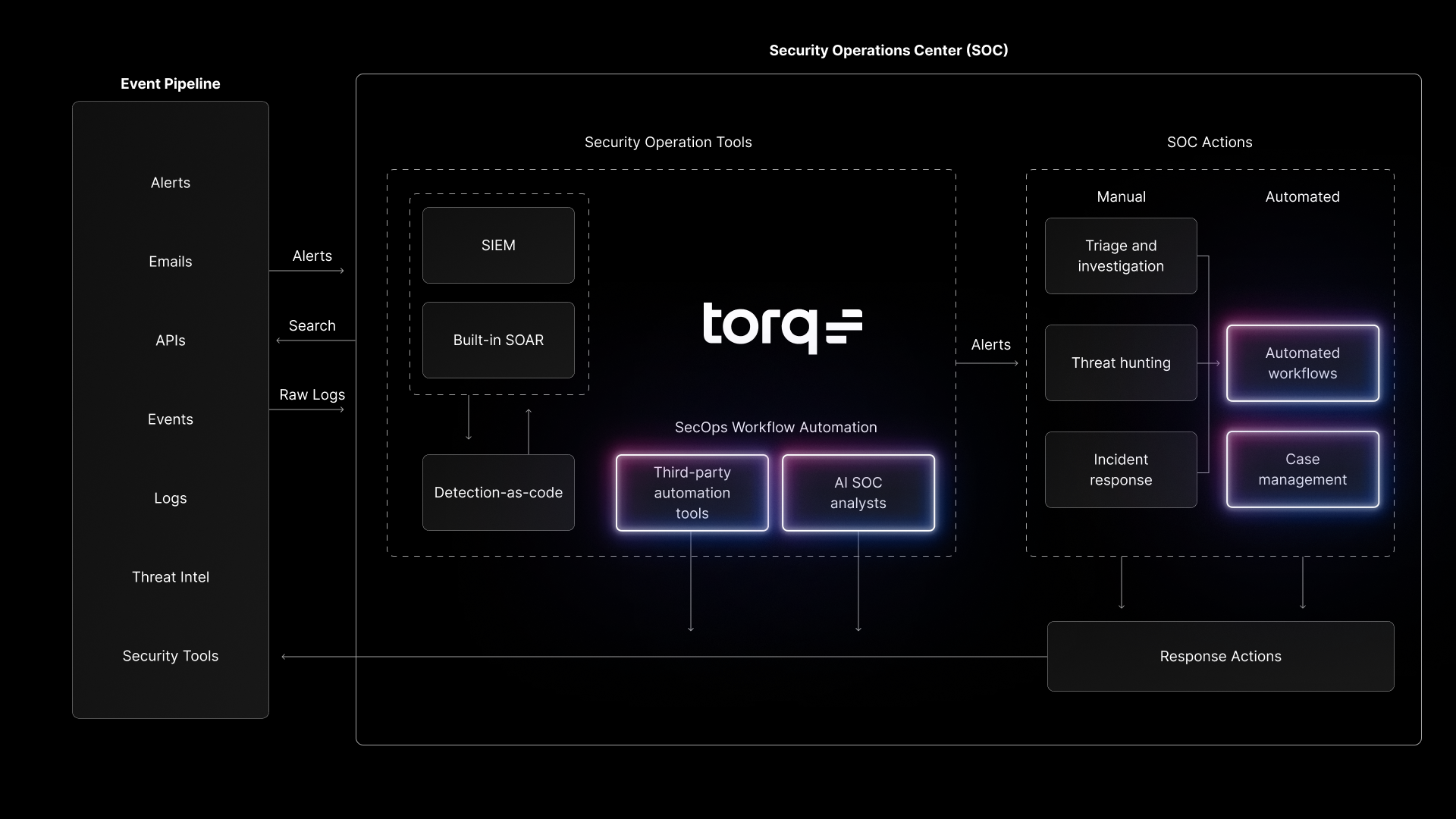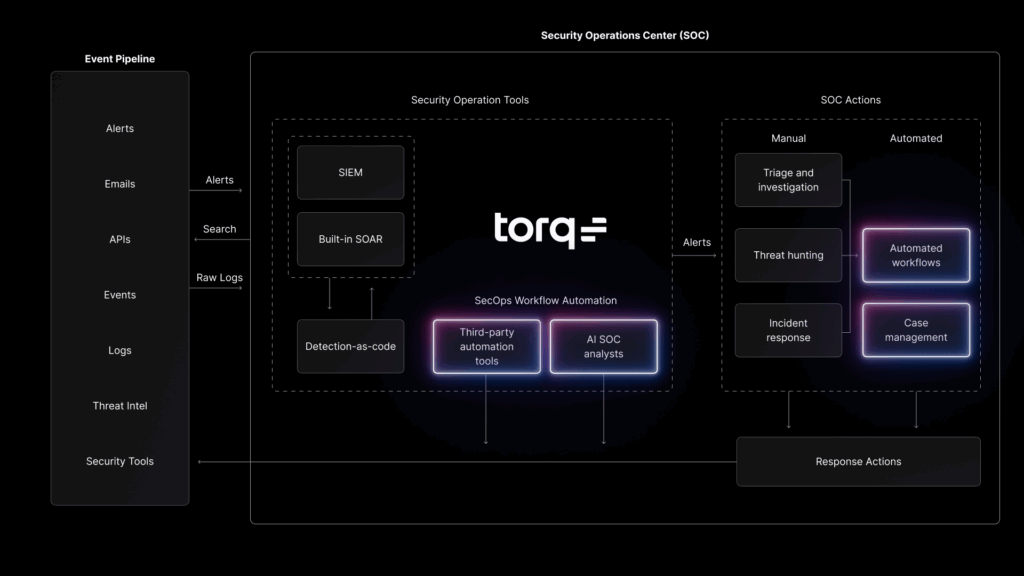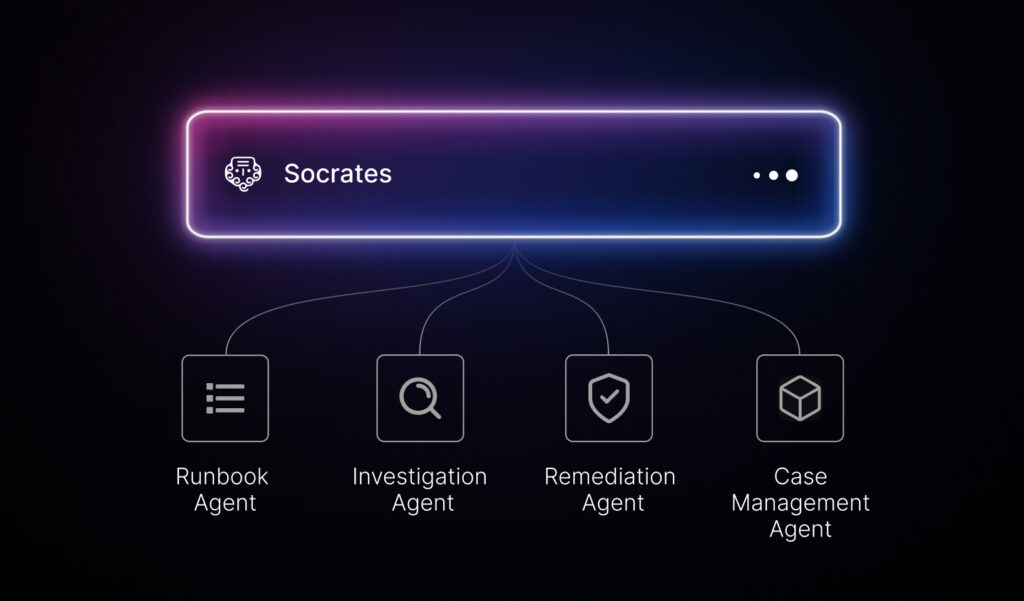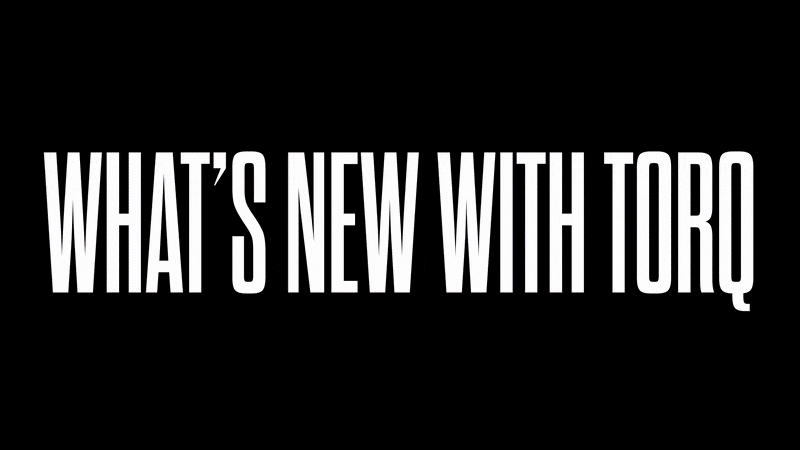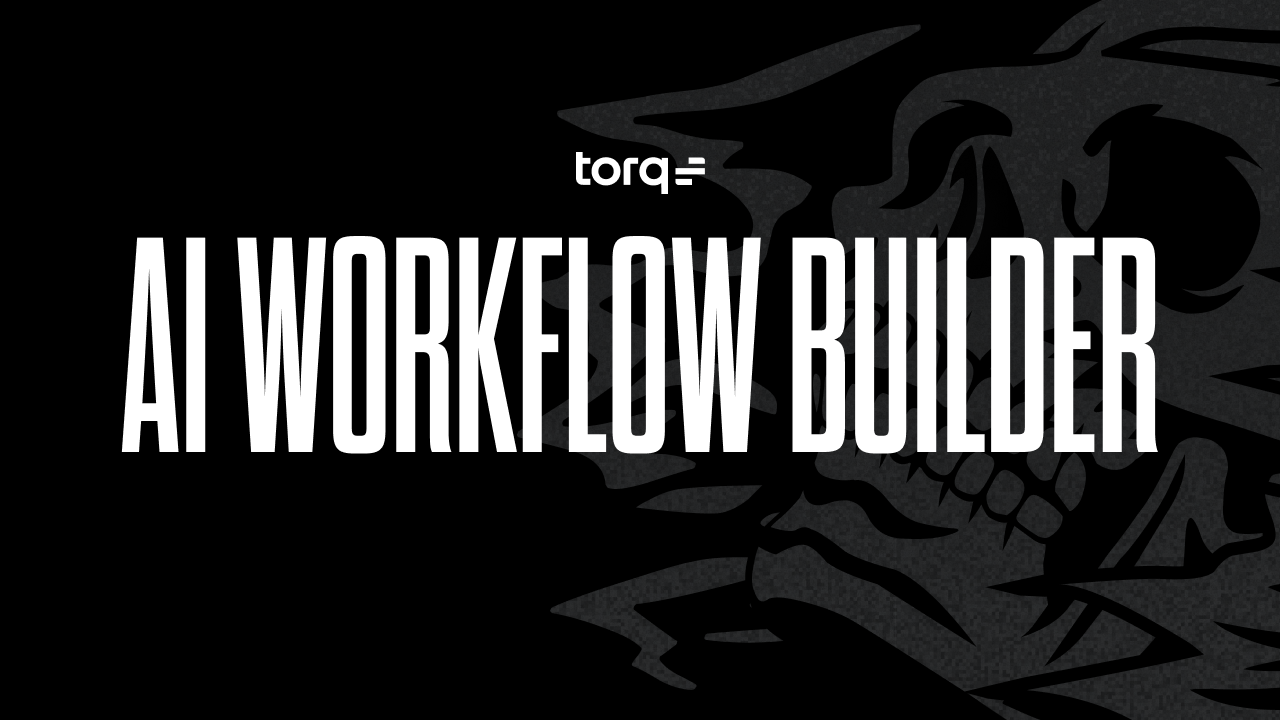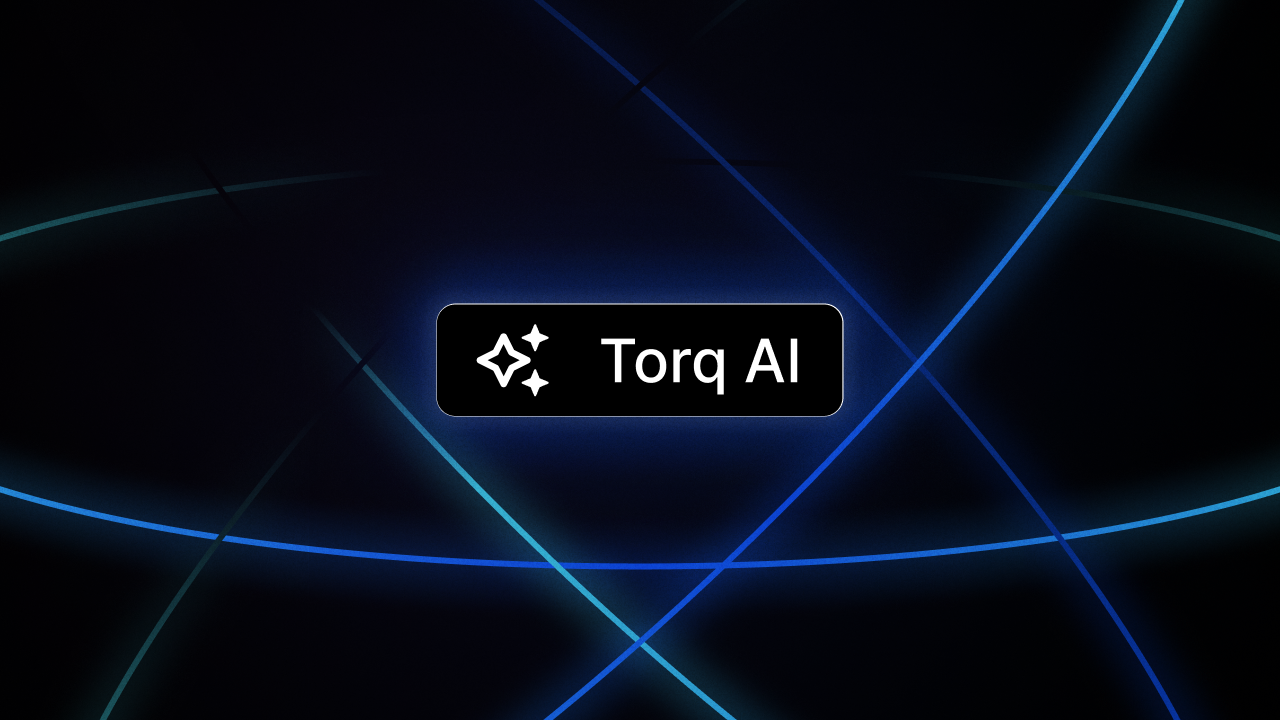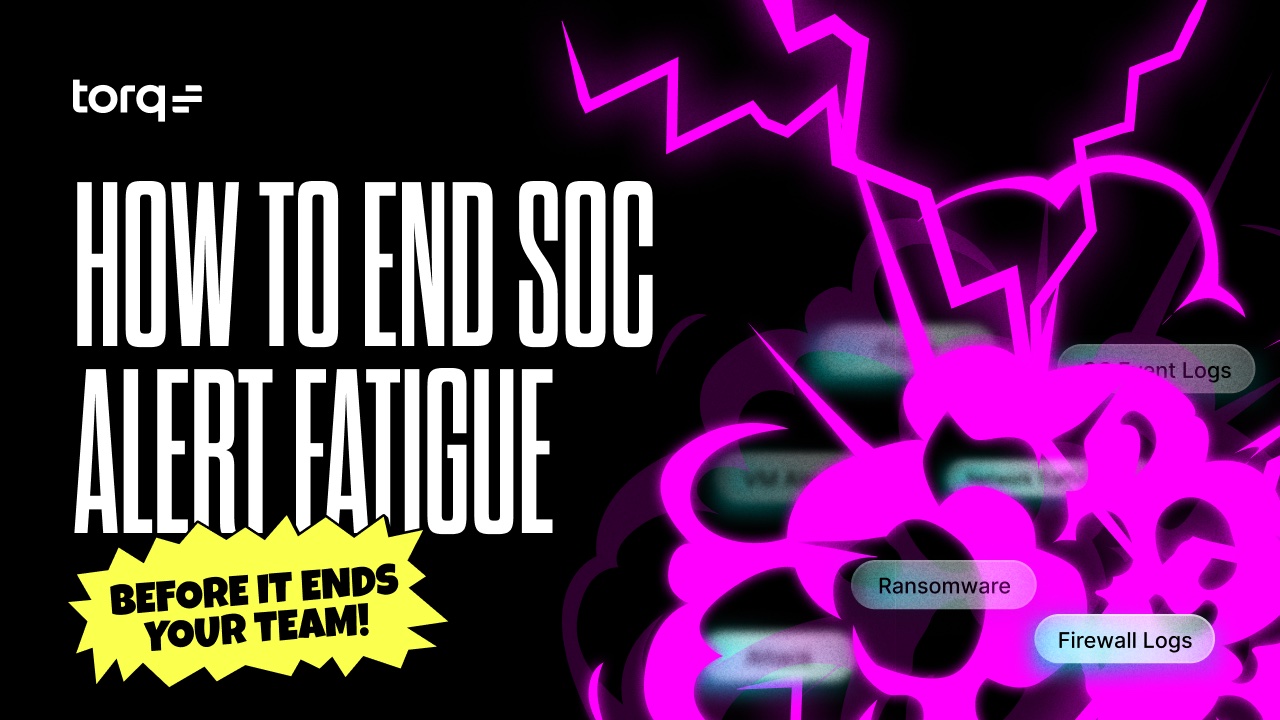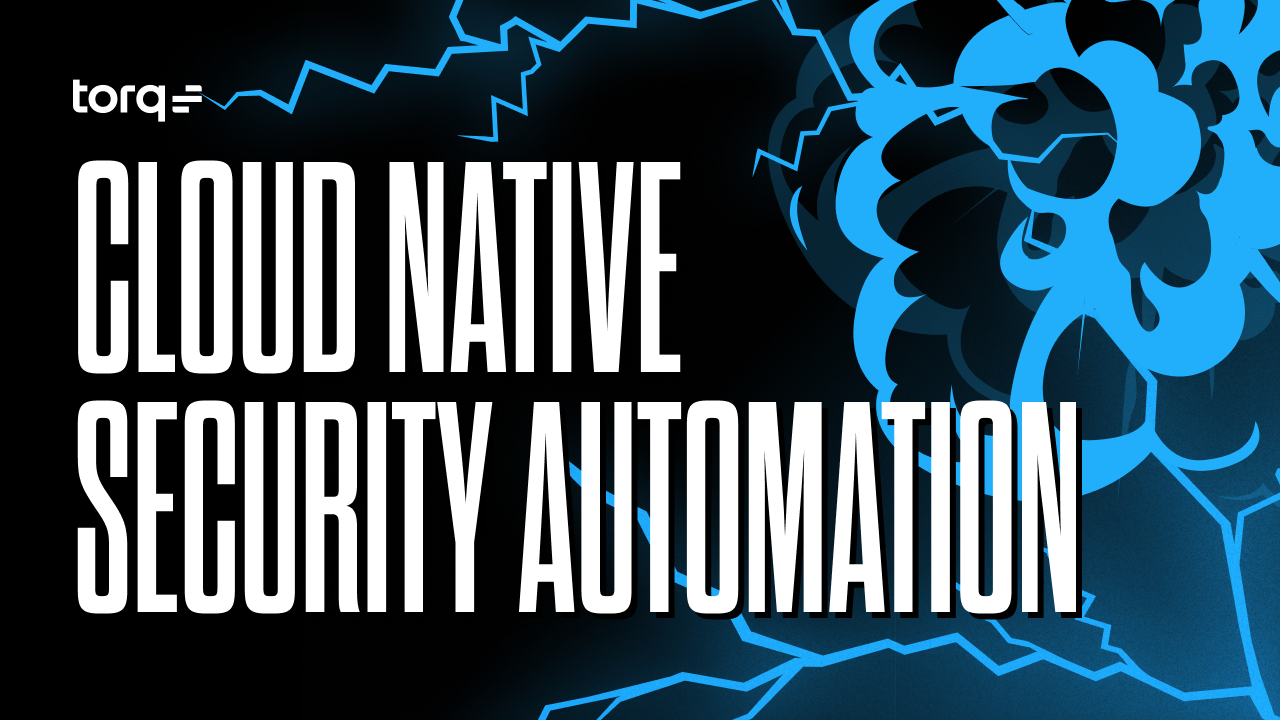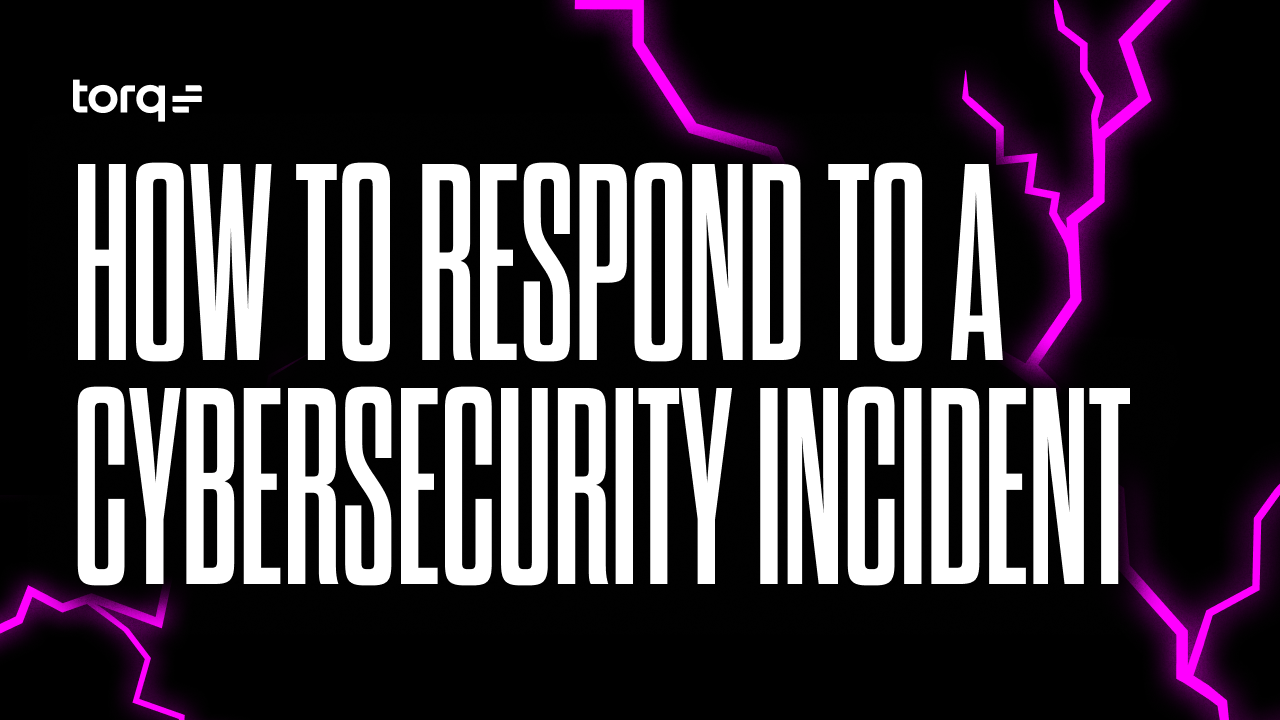Contents
Managed security is a margin game. MSSPs live under strict SLAs and relentless alert volume — usually without proportional headcount growth. Traditional SOAR promised relief, but at multi-tenant scale it often becomes a cost center.
Industry reality backs this up: 80% of security pros say legacy SOAR is too complex, costly, and time-consuming, 92% say it demands scripting skills, and 90% say it needs heavy up-front investment to build playbooks. Meanwhile, the average enterprise runs 76 security tools — and MSSPs are expected to integrate with all of them for every customer.
What’s the fix? A scalable security automation platform that consolidates enrichment, correlation, case management, and automated remediation. With Torq Hyperautomation, instead of pouring hours into brittle playbooks and manual triage, you can standardize cross-tenant workflows, automate Tier-1 at scale, and keep integrations healthy without constant rework. SLAs improve, analyst touches drop, and margins rise even as alert volume and tool sprawl grow.
Below, we expose five hidden SOAR costs that quietly erode MSSP margins and how Hyperautomation changes the economics from reactive and expensive to proactive and profitable.
Why Legacy SOAR Breaks MSSP Economics
Before we fix the margin math, we need to start by understanding why SOAR for MSSPs strains economics in the first place. Traditional SOAR platforms weren’t built for the scale and variability MSSPs face. Their monolithic architectures force every tenant to feel like a one-off deployment: custom environments, unique connectors, and per-client playbooks.
Growth means redeploying and maintaining entire stacks — not just scaling the parts that matter. This results in rising maintenance hours, higher change risk, surprise downtime, and shrinking gross margins per tenant.
If the operating model is the problem, the remedy is architectural. Enter Hyperautomation built for multi-tenant scale.
What Replaces SOAR: Hyperautomation for MSSPs
Torq Hyperautomation was built for MSSPs: multi-tenant by design, horizontally scalable, and event-driven. It delivers limitless integrations, intelligent case automation and prioritization, shared workflow libraries, and a team of AI Agents that can handle the grunt work. Tier-1 work is fully automated, Tier-2 becomes supervised (i.e. one-click approvals in chat), and high-risk actions stay human-in-the-loop — all with complete auditability.
The results are proven: 18× faster onboarding, 10× faster workflow creation, and up to 95% of Tier-1 alerts auto-investigated and enriched.
Most importantly, Hyperautomation shifts MSSP economics. With Torq, SOC leaders can directly track and improve MTTR/MTTA, alert suppression rates, analyst touches per case, onboarding hours per tenant, connector uptime, SLA credits, and gross margin per customer. The curves bend immediately: fewer manual touches, faster time-to-resolution, and consistently stronger SLA performance.
Let’s map how each hidden cost of SOAR shows up in the real world — and how Hyperautomation can fix it.
Hidden Cost #1: SLA Exposure and Penalties
SOAR was sold as “faster response,” yet MSSPs still juggle fragmented alerts, manual pivots, and rework. Every extra touch burns analyst time and risks SLA penalties. Missed MTTA/MTTR targets lead to SLA penalties and eroded customer trust, often caused by manual approvals and inconsistent response times.
How Torq helps: Resolution time is key to minimizing costly service penalties and increasing SOC efficiency. Torq automates Tier-1 triage, enrichment, and safe containment for everyday alerts — phishing, commodity malware, suspicious process trees, and impossible travel. Playbooks include timers, retries, and just-in-time approvals baked in, while every step and artifact is logged for defensible SLA reporting. MSSPs can quickly turn their top SLA pain points into automated flows that act instantly and escalate only when risk exceeds defined thresholds.
Hidden Cost #2: Legacy Security Environments
Every new tenant brings a unique blend of on-prem firewalls, legacy AV, multiple clouds, and niche SaaS. Onboarding devolves into endless script writing and one-off exceptions — “temporary” customizations become permanent snowflakes.
How Torq helps: Torq enables a template-first design approach, letting MSSPs build runbooks with tenant-specific variables and policy toggles. Hybrid connectivity options — from agentless APIs and secure tunnels to UI automation where APIs are missing — ensure MSSPs can onboard even the most complex tenant environments quickly and consistently.
Hidden Cost #3: Integration and Maintenance Tax
With SaaS security products multiplying, MSSPs struggle to keep integrations current, draining time and resources while limiting their ability to deliver baseline SOAR operations across global tenants.
How Torq helps: Torq’s native integrations, no-code customization, and containerized connectors eliminate integration bottlenecks. MSSPs can connect to virtually any system — internal or external — and scale orchestration across tenants without the ongoing integration tax of custom development and maintenance.
Hidden Cost #4: Alert Volume and Manual Triage
Scaling alert queues with more analysts is expensive and unsustainable. Relying on humans for every triage decision drags down ROI and creates inconsistent service delivery.
How Torq helps: Torq automates over 95% of Tier-1 alert handling, reducing manual workloads and slashing mean time to detect and respond. By eliminating repetitive triage tasks, MSSPs cut labor costs, improve gross margins, and give analysts space to focus on high-value investigations and customer needs.
Hidden Cost #5: Continuous Optimization and Reporting
Clients expect MSSPs not just to meet obligations, but to continually improve detection and response — while also delivering unified reporting across complex environments. This creates constant pressure to re-tune playbooks and validate workflows.
How Torq helps: Torq enables continuous optimization through Hyperautomation. MSSPs can orchestrate cross-tool workflows that evolve as client needs change, without requiring costly rebuilds or periodic manual evaluations. Reporting is built-in and mapped to compliance frameworks, giving clients the visibility they demand while reducing operational drag.
The Bottom Line for MSSPs
Legacy SOAR for MSSPs wasn’t built for today’s multi-tenant, API-driven, high-SLA reality. Its hidden costs show up as onboarding delays, brittle integrations, analyst burnout, and margin leakage you can’t explain away at QBRs.
Hyperautomation changes the SOC narrative: correlate once, enrich once, execute safely at scale, then repeat that win across every tenant without spawning “snowflake” workflows. The result is tighter MTTA/MTTR, fewer analyst touches per case, healthier SLA performance, and gross margins that improve as you grow, not the other way around.
Ready to retire SOAR and grow margin?



